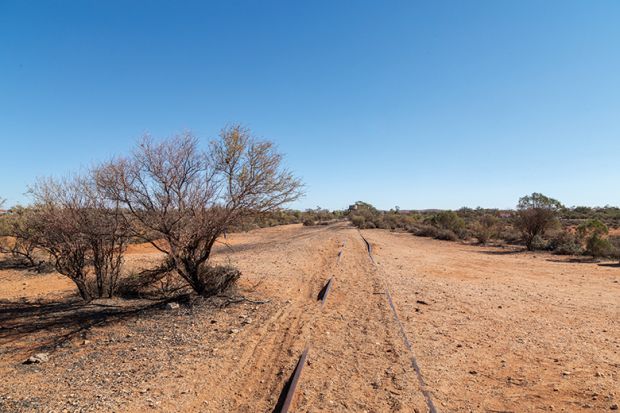Australians tend to take January off. With colleagues doing likewise, and the sun shimmering high in the sky, it’s a good month to kick back with a book, a Bordeaux or a boogie board.
But not for the staff who schedule university programmes. As their countryfolk spread beach towels, these long-suffering people battle spreadsheets with multidimensional axes: course applications, likely acceptances, funding and teacher availability, delivery costs, institutional priorities, labour market needs and so on.
But if the planning of university programmes is a dark art at the best of times, this year was a nightmare. Admissions staff faced a bonfire of uncertainties whipped up by a triumvirate of disruptive forces: the pandemic’s tonic effect on demand for tertiary education; former education minister Dan Tehan’s Job-ready Graduates (JRG) reforms of university funding; and the big unknown: whether and when fee-paying international students will once again grace Australia’s sunny shores.
This threw up difficult questions. Should universities over-enrol domestic students as a buffer against an absence of international students? If so, how would they keep accommodating the extra locals if valuable foreign students unexpectedly showed up? And how could they avoid biting off more than they could chew, recruiting unsubsidised students whom they must continue teaching for years – particularly given that most universities are already over-enrolled, having exceeded their quotas after the government abruptly capped enrolments in late 2017.
Former Australian Catholic University vice-chancellor Greg Craven likened the challenge to three-dimensional chess. “There’s a massive increase in applications and there’s a massive increase in offers. The number of live units in this scenario is massively increased,” he told Times Higher Education in February.
The stakes have also massively increased this year, as 14 months of Covid-19 have already imposed untold pressures on university budgets. Of course, campuses everywhere have been shuttered, student mobility checked and programmes forced online. But Covid-19 has wrought particular damage in Australia because of the sector’s extraordinary reliance on income from international students. And with most universities’ census dates now mostly behind us, financial planners will be poring over their final recruitment numbers to calculate just how much more damage they are likely to take.

In 2019, the latest year for which accounts are available, Australia’s higher education sector collected over 27 per cent of its revenue from foreign students – up from 17 per cent a decade earlier The dependence was particularly high at the biggest and most prestigious universities, such as Sydney (39 per cent), Monash (38 per cent), UNSW Sydney (36 per cent) and Melbourne and Queensland (both 31 per cent).
Economist and management consultant John Howard, who recently published a book on the sector, says universities’ fervour for international recruitment is no surprise given the riches on offer. As pro vice-chancellor of one of Australia’s smaller universities a decade or so ago, with responsibility for innovation and engagement, he was “constantly reminded that we’ve got a bottom line target to meet”. Howard, who carried responsibility for innovation and engagement, says the “fantastic ideas” he gleaned from potential industry partners drew lukewarm responses from his fellow administrators. “I was continually being told, ‘that’s nice, but does it deliver bums on seats? Does it deliver research income?’ That’s the commercial reality.”
The recent international growth spurt at Australia’s most fancied universities began in 2014, as domestic enrolments plateaued and the federal government attempted to cut its higher education grants. By 2019, Canberra had achieved minority funder status for the first time in generations, providing just 49 per cent of the sector’s revenue – down from 56 per cent a decade earlier.
The switchover was particularly striking at the University of Sydney. Its annual take in federal funding has inched up and down from the A$965 million (£537 million) Canberra gave it in 2014. But its revenue from international students has almost tripled from that year’s A$391 million, which – at the time – constituted 21 per cent of the university’s income. In 2019, Sydney reaped A$1.06 billion from international students, 20 per cent more than in 2018. Its overall earnings have grown by A$838 million since 2014, with 80 per cent of this new money coming from international students.
As “cash-flow businesses”, universities’ instinct was to spend such windfalls quickly, according to Howard, with much of it lavished on new buildings. Capital works provided a logical target after building and maintenance funding from public sources vanished: “A lot of the infrastructure was running down and needed replacing,” Howard says. “International students basically provided that respite.”
Addiction to the foreign dollar was not confined to old-guard institutions. Newer universities have also accumulated thousands of international recruits – often taking master’s degrees in management, commerce, engineering or IT delivered by subcontracted providers. Some of these universities, on paper at least, were also hooked on the income from these students on the eve of the pandemic. In 2019, Victoria’s Federation University obtained 44 per cent of its revenue – A$181 million – from onshore international students (easily eclipsing the A$125 million it collected from Canberra), while 36 per cent of income to Central Queensland University (CQU) came from the same source.
Such figures can overstate the dependence, with much of the income going straight back out again to the partner providers that deliver courses; the A$83 million Federation spent on “external education services” in 2019 overshadowed the A$69 million on staff salaries, for instance. Nevertheless, foreign income remains a vital financial lifeline for institutions with razor-thin financial buffers; CQU, for instance, recorded an operating surplus of just 0.7 per cent in 2019.
Vice-chancellor Nick Klomp says CQU has reduced its current spending in line with “the substantial reduction in international student revenue”. But he criticises government failure to produce “Covid-safe secure corridors” to facilitate students’ return. “The UK, Canada, Singapore, Japan and even New Zealand have found ways to bring international students back safely,” Klomp says. “Australia does not even have a plan [for how to] stop the daily loss of market share to our international competitors.”
The reliance on overseas tuition dollars explains why Australia’s top-ranked universities have been forced to shed up to 500 permanent staff each, and countless more casual and temporary employees. Representative group Universities Australia said the pandemic had cost its members at least 17,300 jobs last year, while Melbourne analysts estimated the toll of casual staff had been roughly double this number. Compared with such figures, the 3,000-odd staff reportedly made redundant from almost three times as many UK universities over the first seven months of the pandemic seems almost like a rounding error.

Two competing narratives explain how Australia’s universities managed to put themselves in this position. One view is that successive governments forced them into it. For instance, until the Bradley Review, university funding was indexed in such a way that it failed to keep pace with salaries – universities’ biggest expense. Then, after 2017’s snap recapping of the system by the Coalition government, it was calculated in a way that meant universities could afford to enrol slightly fewer students each year.
The last Labor government, meanwhile, attempted to impose a 2 per cent “efficiency dividend” – costing the sector about A$900 million – to help pay for schooling reforms. Then there are the capital funding streams mentioned above: the Capital Development Pool, the Better Universities Renewal Funding and the Education Investment Fund all expired or were frozen within the past 15 years.
Unsurprisingly, blaming the government is a common response within the sector. For instance, Australian Catholic University historian Hannah Forsyth believes that Canberra has “coerced” universities to act like businesses – only to then resent them for not doing its bidding and pursuing “specific versions of the public good”. “This entrepreneurial, competitive higher education ‘industry’ is the result of deliberate government policy,” she says. “Government could have a public university sector that does what Canberra says. How do we know? They used to have one, but the federal government dismantled it in the 1980s and no one has tried to put it back together again since.”
Policy analyst Gavin Moodie adds that Australian governments have been admonishing universities to be more businesslike at least since the higher education management review led by then Bankers Trust chairman David Hoare in 1995. Moodie, an adjunct professor at the University of Toronto, says Canberra pressured state governments to appoint more businesspeople to university councils while culling elected staff and student members who mistrusted their institutions’ commercial activities.
“Governments have badgered universities to reduce their reliance on government funding,” Moodie says. “They have promoted universities’ recruitment of international students extensively, leading trade delegations to China, India and elsewhere. [Former further education minister] Andrew Robb expressed the view that there was no reason Australian educators couldn’t be teaching 10 million international students in a decade.”
But then came the pushback. Political scientist Glyn Davis, the long-serving former vice-chancellor of the University of Melbourne, points out that “nobody criticises any other part of the economy for being global – but universities they do”. And he rejects the frequently aired claim that Australian universities are too dependent on China: “Universities were no more exposed to the Chinese market than the average of the Australian economy, and much less exposed than a whole range of other industries – yet really only universities have been criticised.”
Moreover, a whole range of other industries benefit from Australian universities’ recruitment of overseas students, points out Peter Høj, vice-chancellor of the University of Adelaide. As South Australia’s biggest export earner, international education has a wide reach: “The flow-on effects to the outside economy are as big as the direct cash injection into universities,” says Høj, who previously ran the University of Queensland.
“It’s all fine to say that universities did too much [international recruitment], but try to ask the people who no longer have a profitable corner shop because the international students are not here,” he says. “Try to explain to their children why they can’t afford to go to the zoo any more. Try to explain to the people who…invested in some student accommodation why it’s gone belly up.”
Moodie notes that international education revenue has also bankrolled Australian universities’ improving research performance and consequent rise in the international rankings – even as former foreign minister Julie Bishop bemoaned Australia’s lack of a top-20 university. Davis, too, underlines that “if you solely rely on commonwealth-funded student places, you are not going to be a major player in research. And why would you not want to be a major player in research? Why would we not want Australian knowledge to contribute globally?”

However, some argue that universities pushed far harder than necessary in building a multibillion-dollar international education industry from their bases as quasi-public sector agencies – without political endorsement, adequate risk management or an overarching strategy.
It certainly seems true that if universities were driven to use international education earnings to make up for inadequate research funding, they overcompensated. Australian National University policy guru Andrew Norton has argued that even a large increase in commonwealth spending would have come nowhere near satisfying their ambitions, with universities collectively spending over A$12 billion on research by 2018. “Growth on this scale was something universities chose to do, not a change forced on them by government policy,” he blogged last June.
And sceptics are unconvinced that the improvements in research prowess justify the extent to which Australian universities have made themselves hostage to international geopolitical – and epidemiological – fortunes. In a scathing assessment published last August, for instance, University of Sydney sociologist Salvatore Babones said the revenue from Australian institutions’ mass recruitment of Chinese students in particular “is not going to academics to improve their research. It’s going towards buying researchers to improve the universities’ rankings. It’s not that the world is benefiting because there’s more research being done. It’s simply reshuffling the deck in favour of Australia.”
Management consultant Howard makes a similar point. For him, the international gravy train encouraged a corporate mindset that obscured the “public good aspect” of universities’ missions, with senior executives paid at private-sector levels and research priorities skewed by the “ratings game”, while “underlying weaknesses” such as “overloaded management structures and administrative inefficiencies” were ignored.
The international education “bubble”, Howard adds, encouraged “hubris and complacency”, with institutions expecting the “exponential trajectory” of earnings growth to continue unchecked. And a member survey by representative body Universities Australia suggests he was right about the extent of universities’ optimism: they budgeted for collective A$1.2 billion-plus growth in their revenue in 2020, on top of the A$5.2 billion increase in international education income over the previous five years.
Howard’s book, titled Rethinking Australian higher education: a diversified system for the 21st century, includes a 52-page explainer on university financial management, reflecting the increasing sophistication evident in institutions’ property investments, cash resources and finance market trading (including issuing their own securities). But the richest institutions, in particular, lack similarly sophisticated strategies for spending the proceeds of the international education goldmine, Howard says.
They also lack a sophisticated understanding of risk – and their own appetite for it, according to Omer Yezdani, director of the Australian Catholic University’s Office of Planning and Strategic Management. Yezdani says that while universities would have identified pandemics and other global shocks in their risk profiles, “they would have seen the likelihood as low. They might not have really responded to it in an active way. Maybe they just thought they would deal with it at the time.”
He says the pandemic will hasten the adoption of the types of business models that “major consulting firms have been on about for a while”, which put more emphasis on strategy and risk. “Universities have been expected to have responsible operating models that sustain them financially as autonomous institutions without a need for intervention from the commonwealth should things not go so well,” he says. Yet “even pre-Covid, a lot of universities did not have what you would ordinarily call a sustainable operating result”.
If this verdict is correct, it is rather ironic given that university councils have been peppered with corporate heavyweights valued for their experience in risk management, as well as in investment and infrastructure. But higher education consultant Justin Bokor questions whether such recruits have the time or attentiveness to deliver on that experience.
“I’ve met a lot of risk [professionals] in my travels, and they’re not necessarily the sort of people I would want to manage my risk,” says Bokor, a former commercial director at Monash University. He says risk management often involves ticking boxes, and he questions the extent to which practitioners oblige institutions to “look at the big picture and say: ‘If we lost this funding source, how long until we went bankrupt?’”
He has no argument with the pursuit of international students per se. “If you had a highly attractive, high-margin product that you were highly competitive in…why would you not participate strongly in that market?” he asks. “The question is: what do you do with the growth in the business, and how do you manage your risk? Clearly, some [universities] didn’t get that right…If I was on a university council, I’d find clever ways to build reserves or a buffer [to] draw on when there’s another shock.”

But that remedy may be easier than it sounds, with university directors bedevilled by an issue that rarely troubles them when they sit on corporate boards – the downside of showing too big a profit.
Australian institutions are not alone in this quandary. A recent University of Huddersfield study of financial modelling and scenario analysis in UK universities investigated why many did not disclose their “key sensitivities” to their funding councils. “The primary reason given was a reluctance to demonstrate…how institutions might be able to manage with significant funding cuts, for fear of encouraging such a reduction,” the researchers reported.
Australian universities share these worries, Bokor says. “What level of surplus are you going to show? The government is always telling universities: ‘You’re too reliant on international.’ The next day they turn around and say: ‘You’re booming in international so you don’t need quite as much from us.’”
Nevertheless, he says, universities must heed the lessons from the Covid crisis. “How should they change their corporate governance? I would [look at] changing the mandates in the finance, investment or risk committee to have tighter rules around level of reserves, risk management and scenario planning.”
Yezdani says there would be “merit” in exploring a legislated requirement around the size of universities’ financial buffers, along the lines of rules imposed on US finance firms following the 2007-08 global crisis. It could oblige institutions “to demonstrate what is appropriate in their context, and to satisfy the regulator with sufficient information”, rather than imposing a “hard line” requirement, such as a minimum 5 per cent operating margin.
He says that as well as boosting universities’ financial sustainability, such a move would discourage “political games” in which governments dodge their funding responsibilities by highlighting universities’ big “profits”.
“Is it profit?” Yezdani asks. “Or is it just a sensible model for managing the institution? It would probably help everyone – employees, students, the regulator, the commonwealth, universities – to have clarity about what the expectation is.”
But former Melbourne boss Davis rejects suggestions that universities bungled their risk management. “I know just how much work we had done: how many scenarios we worked through. We could have told you, to the day almost, how long we could keep the institution afloat if all money stopped – including domestic money. All of that work is done, but none of it is advertised. You don’t share [it] publicly. It doesn’t mean you haven’t done it, and done it in a lot of detail.”
The counterfactual proves the point, Davis says. “If it was true that no planning was done, universities would have folded very fast when their money stopped,” he says. Yet “the big players were able to get themselves through [even though] the government denied them JobKeeper [wage subsidies]”.
Federation University vice-chancellor Duncan Bentley offers an even more forthright defence, saying it is no accident that universities have survived for centuries.
“Universities are pretty darn good at responding to market demand,” Bentley insists. “We’ll pivot. We’ll change. It might not always be pretty, but, hell, we’re not going to be Kodak. We’re jolly good at changing because we’ve got the best minds on the planet doing it.”
Register to continue
Why register?
- Registration is free and only takes a moment
- Once registered, you can read 3 articles a month
- Sign up for our newsletter
Subscribe
Or subscribe for unlimited access to:
- Unlimited access to news, views, insights & reviews
- Digital editions
- Digital access to THE’s university and college rankings analysis
Already registered or a current subscriber? Login








